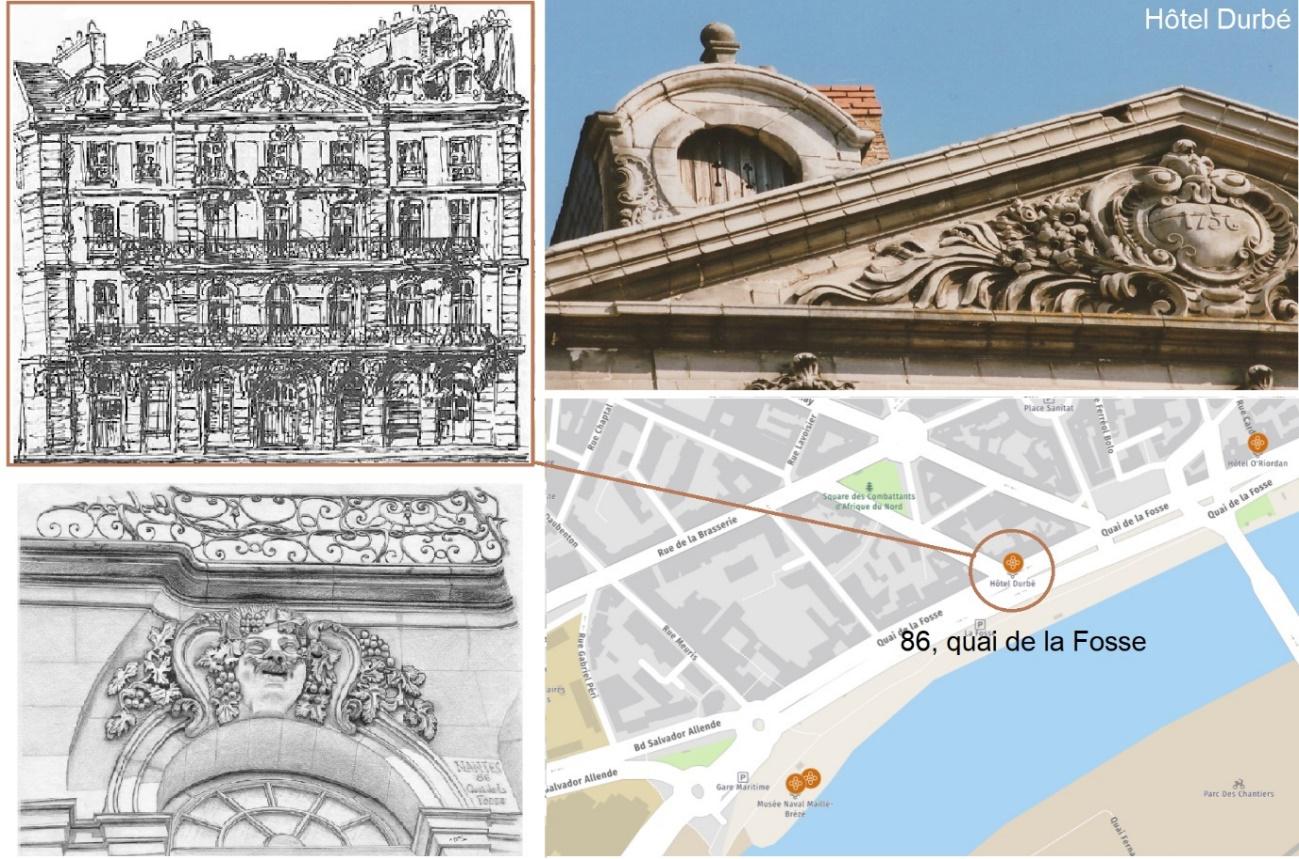The “Quai de la Fosse”, also known as the “Quai des Irlandais”, is located on the north bank of the Loire at the entrance to the city of Nantes. This was the quarter which, in the 18th century, was the home to the Irish merchants and shipowners. Claude Durbé, who commanded the frigate the Du Teillay and took Prince Charles Stuart to Scotland in July 1745, built his own property in 1756 at 86, Quai de la Fosse3 in the typical period Rococo style of Louis XV. The Du Teillay sailed down the Loire to Saint-Nazaire at the end of June 1745 when Prince Charles Edward Stuart embarked with his companions, the men later known as the seven men of Moidart. The Prince was also accompanied by Antoine Walsh, the owner of the ship. The Du Teillay set sail bound for Belle-Ile from the bay of Bonne Anse located just west of Saint-Nazaire on 3 July 1745 (New Style = N.S.). This little three-masted frigate referred to as a sloop was loaded with gold, arms, ammunition and supplies for Scotland. Antoine Walsh was a fervent Nantes Jacobite and merchant who had accumulated a colossal fortune, having been first a Corsair captain for king Louis XV. He became a successful shipowner and embarked in the infamous slave trade between Nantes, the west coast of Africa and Saint-Domingue, also known as the Triangular trade. As a shrewd entrepreneur and avid investor, Antoine Walsh bought sugar cane plantations in Saint-Domingue from which he drew a large part of his financial success. The “Quai de la Fosse” now hosts the memorial to the abolition of slavery and provides a pontoon to a splendid three-masted ship, a ship known on the banks of the Loire named Le Bélem (https: // www.fondationbelem.com), a vessel that reminds the past of the city of Nantes in the maritime trade.
3 The property is still known as Hôtel Durbé.
Access
Street parking, payment car park (parking Gloriette-Petite Hollande).


